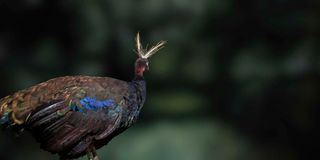
I have said in the past said that diseases do not read books. This means medical science may have described and documented many diseases, how they affect different animals – including humans – how they manifest themselves in the animals and organs and how they respond to treatment.
There is also extensive and detailed documentation on the occurrence of diseases in different age segments of the population.
We know many diseases that do not affect young animals. For instance, calves younger than two months are unlikely to be infected by foot-and-mouth disease.
Despite all the knowledge a doctor or science may have about diseases, there are the occasional situations where illnesses fail to correspond to the documented knowledge.
There are many reasons diseases fail to manifest as documented or even respond to treatment already conventionally identified as the best approach. One major reason diseases do not read books is because the documented information on an illness is the most occurring signs and response to treatment.
There is also the unique event of a disease called the pathognomonic sign. For instance the hard, round, raised nodules on the skin of cattle are pathognomonic for lumpy skin disease caused by a virus.
The nodules may fail to appear if the animal has a high degree of immunity but not protective enough to prevent infection.
In that case, a cow infected with the virus will show elevated temperature, swollen lymph nodes, swollen legs or just raised temperature and limping on one or more legs. The skin will also show some rough pin-head sized nodules that only make the hair a little bit ruffled. A cow will show a drop in milk yield but will eat normally. The temperature will normalise a few days later and the cow will fully recover.
Another reason diseases are said not to read books is that they will not indicate to the doctor whether they have infected the patient singly or in multiples.
Granted that in many cases, the patient has a single infection, it is not rare to find a patient with more than one illness. When infections are combined and not easily distinguishable, the disease presentation may be confusing, especially to the doctors without sufficiently long and varied experience.
No amount of experience, however, gives a doctor the immunity from encountering confusing disease situations.
There are many disease-causing organisms, otherwise called pathogens. According to current knowledge, there are bacteria, viruses, parasites, fungi and prions. The first four types have been known for a long time but prions are a fairly new discovery.
Mad cow disease, first described in the United Kingdom in 1986, is a well-known example of a prion-caused illness. It caused a global scare because it leads to brain damage and death in cattle and humans.
When new diseases emerge, they never announce their absence in books. It is the responsibility of medical scientists to study the patients, the disease patterns and the environment to determine the epidemiology or pattern of spread of the disease, the signs and effects on single patients and the population.
Scientists also look for changes in the body function and chemicals stimulated by the disease.
Finally, they analyse body tissues called samples and seek to identify the causative agent and demonstrate that it is different from any known pathogen.
In the process of diagnosing a new disease, scientists consult one another locally and internationally to confirm there are no published or unpublished records of the unfamiliar illness and/or causative agent.
Unravelling new pathogens and disease processes is the dream achievement of any clinical and research medical practitioner. It only rivals the discovery of new cures of diseases.
The occurrence of new diseases or diseases behaving unusually is a living challenge for medical practitioners.
A disease may be new globally, in a region or in a small locality. Whatever the situation, unusual diseases should always be investigated, diagnosed, fully understood and their treatment determined.
Three weeks ago, I had a case of unusual disease in farmed peacocks. Two birds out of six affected, in a flock of 150, were brought to my clinic.
Kimani, who brought the birds, explained that they were producing snoring sounds from the lungs. Medically, we call the sounds rales. It felt like air was passing through thick fluid.
He also said the birds kept distending their necks and opening their beaks periodically.
This behaviour is called gaping. The birds do it to help increase the amount of air getting into the lungs.
Kimani said in recent times, their farm had lost three birds to the disease despite rigorous treatment.
The birds would have the lung sounds for about three months, keep losing weight even though they had good appetite and then they would die within three to six months.
Kimani said the birds were vaccinated against common diseases and were regularly dewormed.
I examined the birds and confirmed Kimani’s description of the birds’ behaviour. However, I noticed the rales came from the upper wind pipe or trachea and the voice box.
The birds had no fluid or mucous in the airways, looked bright and fed well.
The findings were confusing because they did not correspond to any disease of peacocks that I and my colleagues at the clinic had encountered.
Blood parameters of the peacocks were normal. I shared the findings with colleagues in other institutions. None had encountered the disease pattern the birds presented.
In the meantime, I treated the birds tentatively for gapeworm infestation, mycoplasma bacterial and viral infection as we continued to consult other colleagues.
The birds appeared to get well after three days but the signs returned on the sixth day.
We agreed with the owner that we take the more sickly bird to the Faculty of Veterinary Medicine of the University of Nairobi for further investigation.
The bird was killed and post-mortem examination showed clean lungs and other organs. The upper windpipe and the voice box were, however, inflamed and swollen.
It appeared to be an unusual virus infection and confirmed my diagnosis of the origin of the snoring sounds.







